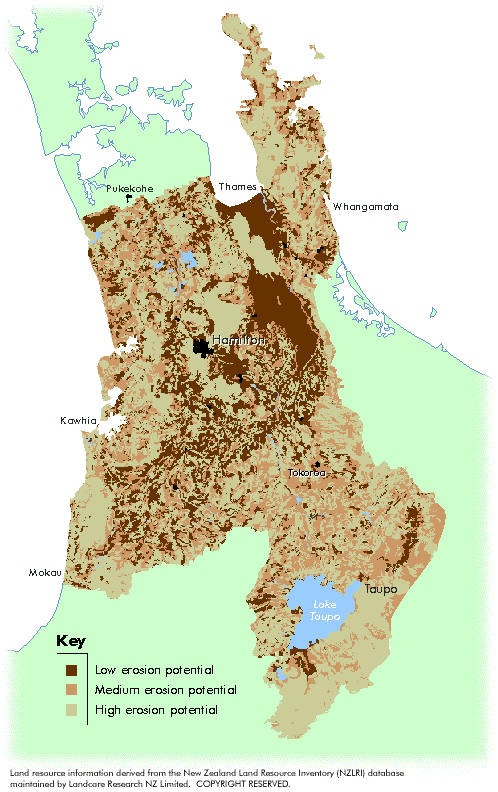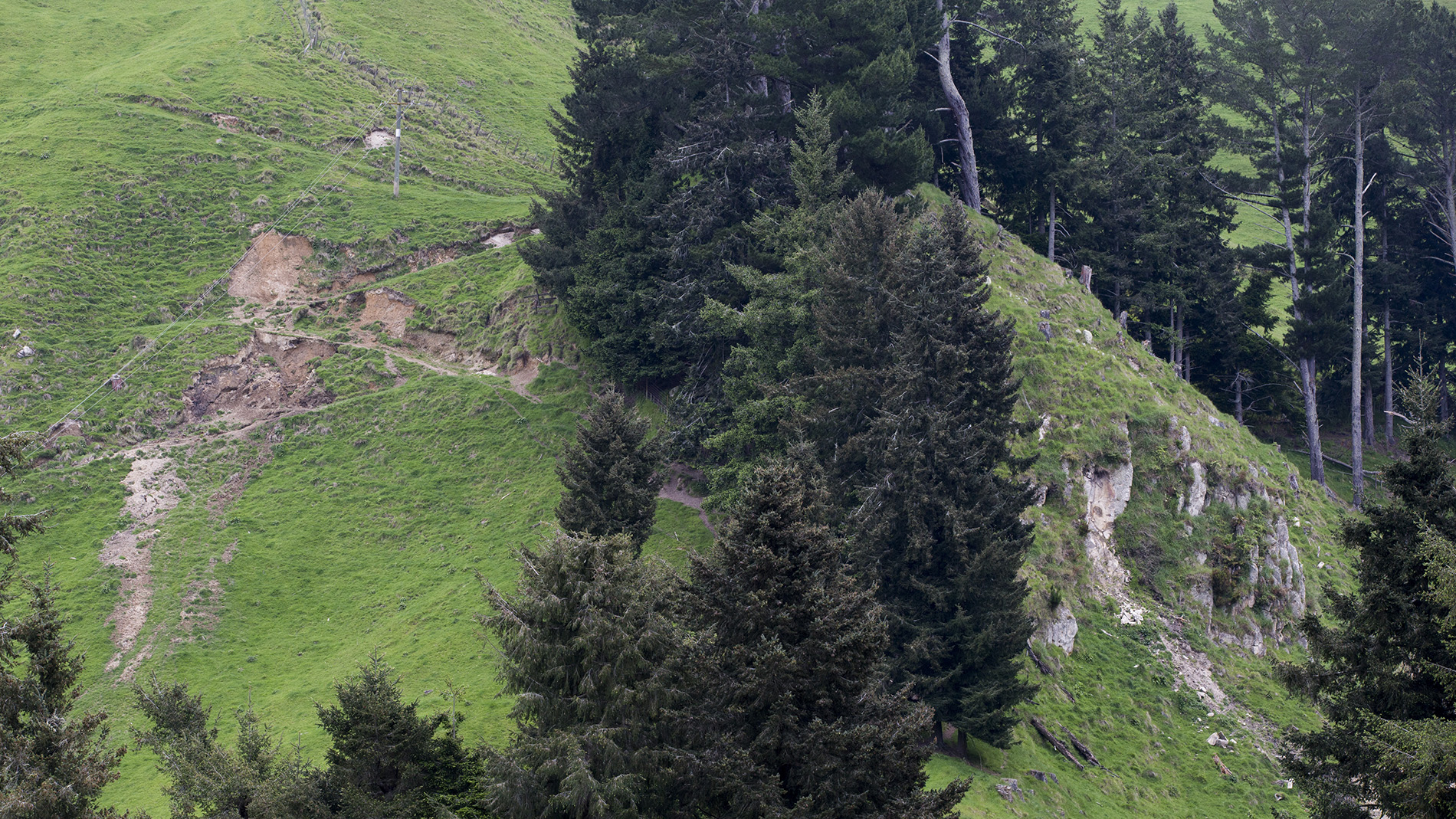What causes erosion?
Erosion is a natural process, but people can greatly accelerate the rate of erosion by removing vegetation and using inappropriate land management practices. In the Waikato region, eroded soil often ends up in our waterways, causing poor water quality. Good land management reduces erosion.
Gravity, wind and water can wear away the soil surface and move soil far from where it was formed. This process is called erosion.
The rate of soil erosion depends on the:
- type of soil
- climate
- vegetative cover
- topography (slope and aspect)
- land management practices.
Accelerating erosion
Soil scientists classify 43 percent of land in the Waikato region as having high potential for erosion.
People often accelerate the rate of erosion by removing vegetation and having inappropriate land management practices. Sometimes the vegetation is removed intentionally (for example during logging, cultivating or grazing). Sometimes introduced pests remove it for us (possums, goats, rabbits, deer and pigs).
Once the vegetation is removed, the land is very vulnerable to erosion. Large amounts of soil can be lost from cultivated land during storms. In some cases as much as 35 cm of soil has been lost over thirty years.
Where does the eroded soil go?
We lose most eroded soil from the land. Soil particles moved during erosion are often washed and blown into our waterways.
This is bad for our waterways because:
- it decreases the water clarity (less light for plants to photosynthesize)
- fine sediments can suffocate fish and other water life
- increased nutrients encourage undesirable plants and animals.
Eventually the water carries the soil particles downstream to the coast, causing increased sediment in our harbours. More sediment in our harbours means:
- less habitat for kai moana (seafood)
- poor water clarity
- flooding problems upstream
- infilling of harbours restricting recreation
- changes in habitats.
Reducing erosion
-
Forty-three percent of land in the Waikato region has a high potential erosion risk.
The risk of erosion increases if land:
- has little vegetation on it
- is steep
- is on the bank of a river or lake
- is disturbed
- has erosion prone geology (for example mudstone or pumice)
- is under pressure from high stock density or machinery
- is in an area of high and intensive rainfall.
Cultivation also leaves soils vulnerable to erosion. The compacted soils left in wheel tracks often act as channels for water. When it rains, water can then undercut and remove the surrounding soil.
Identifying risk factors
Reducing the risk
Potential soil loss
This map shows the areas that have a low, moderate and high potential for erosion in the Waikato region.


